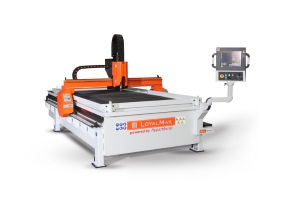We are now open from 8h to 12h and from 13h to 18h - +32 (0)9 355 74 26 - info@welda.be
Plasma cutting mistakes

10 common plasma arc cutting mistakes
A good operator with well-maintained plasma arc cutting (PAC) equipment can save a shop hours of downtime and thousands of dollars in operating expenses. These savings will result in greater profits for your cutting operations and your company. By avoiding these 10 common mistakes, your work will yield even better results.
1. Using consumables until they "blow"
Look in your used parts bucket and you will probably see consumables that have been run to failure. Using severely worn consumables can not only ruin a good piece of metal, it can cause expensive torch failures and unnecessary down time. An experienced operator can tell consumables are worn by the sound coming from the torch, the color of the arc, or subtle changes in torch height. However, the best way to judge the condition of your consumables is to periodically inspect your consumable stack-up when you notice that the cut quality is deteriorating. Keep a record of the average parts life over time (in number of starts or arc-on time) and develop guidelines for expected parts life based on the amperage, material, and thickness you are cutting. Once average life is established the operator will know when to check and or replace consumables preventing a catastrophic failure.
2. Changing consumables too soon
At the complete opposite end of the spectrum are consumables that are discarded too early. Rather than changing consumables after a set number of hours, an operator should look at how the consumables have worn. Are there gouges on the inside or outside of the nozzle? Is the orifice no longer round? If so, then it needs to be replaced. If not, it is likely still useable. To tell if an electrode is spent, check the hafnium pit found in the very center and replace if too low. Gas swirl rings should only be changed if a close examination reveals dirt or grease in the holes, or you see cracks, arc burns, or excessive wear. The same holds true for shields, which should only be replaced if they show signs of physical damage. Often shields can be cleaned of metal spatter and reused.
3. Using the wrong parameters and parts for the job
Consumable selection depends on the material and thickness being cut, the amperage and plasma gas used and other arc cutting parameters. The operator's manual that came with your plasma system will tell you which consumables to use. Using incorrect consumables can lead to shortened parts life and reduced cut quality. It is particularly important that you run parts at the correct amperage. The best cut quality and parts life is usually achieved when the amperage is set to 95 percent of the nozzle's rating. If the amperage is too low, the cut will be sloppy. If it is too high, the nozzle life will suffer.
4. Assembling the torch incorrectly
Assemble the torch so parts are aligned correctly and fit together snugly. This ensures good electrical contact and the correct flow of gas and coolant through the torch. When changing parts, keep consumables on a clean shop rag to prevent dirt or metal dust from contaminating the torch. Cleanliness during torch assembly is very important and often neglected. When applying O-ring lubricant, use just enough to put a shine on the O-ring. Too much lubrication can cause clogging and metal dust contamination in the torch, leading to uncontrolled arcing in the plasma chamber and ultimately torch failure. Never use grease. It can cause destructive arcing and burning within the torch.
5. Neglecting routine maintenance
Torches can last for months or even years with proper care. Keep torch threads clean and check seating areas for contamination or mechanical damage. Clean any dirt, metal dust, or excess lubricant that you see using a cotton swab and electrical contact cleaner or hydrogen peroxide.
6. Not checking gas and coolant flow
Check your gas flow and pressure and coolant levels every day. If the flow is insufficient, consumables will not cool properly and parts life will be reduced. Inadequate flow of cooling water due to worn pumps, clogged filters, low coolant level etc. is a common cause of system failure. Constant gas pressure is important to maintaining the cutting arc. Excess gas pressure is a common cause of "hard starting," a situation in which the torch fails to initiate an arc when all other conditions for normal operation are correct. Too much gas pressure will also cause rapid deterioration of electrodes. Likewise, the plasma gas supply must be kept clean to prevent short consumable and torch life. Compressed air systems are especially prone to oil, moisture, and particulate contamination.
7. Piercing too low
Standoff, the distance between the workpiece and the tip of the torch, is critical to both cut quality and parts life. Even slight variations in torch height can affect the angularity of the cut surface. The height of the torch during piercing is particularly important. One common error operators make is piercing too low. This causes molten metal to spatter onto the front of the nozzle and shield. Arc "snuffing" can even occur if the torch pierces when touching the metal, or drags along the surface while cutting. If the arc is "snuffed", your consumable parts and sometimes the torch are destroyed. Piercing at a height 1.5 to 2 times the recommended cut height is recommended.
8. Cutting too fast or too slow
Cutting too fast or slow will cause cut quality problems. If the speed is too slow the cut pieces will develop "low speed dross," a large bubbly accumulation of dross along the bottom edge. Slow speeds may also cause a widening of the kerf and excessive amounts of top spatter. If the speed is too fast the arc will lag backward in the kerf causing a beveled edge, a narrow kerf, and a small hard bead of dross along the bottom edge of the cut piece. High speed dross is difficult to remove. The correct cutting speed will produce minimal dross so you have a clean edge that needs little rework before the next step in the manufacturing process.
9. "Stretching" the arc
Arc stretching can occur at the beginning and end of the cut. When this happens, the arc cuts into the side wall of the nozzle damaging it. When doing an edge start, the plasma arc should be started with the nozzle orifice directly centered over the edge of the work piece. This is important to remember in punch press / plasma operations where the arc is started in the center of a punched hole. In this application, the arc should be started off the edge and not the center of the hole. Arc stretching can also occur at the end of the cut if the torch is programmed to run off the plate with the arc on, or if the "lead-out" follows the kerf of previously cut metal. Timing the arc-off signal and programming the lead-out can minimize this effect.
10. Crashing the torch
"Tip-ups" and crashes can irreparably damage your torch. Torch collisions with the workpiece can be prevented by programming the shape cutting system to travel around, rather than over, cut parts. Torch height sensors also offer protection from torch crashes by correcting for variations in the material. However, voltage regulated height controls can fail to protect the torch. For example, "torch diving" often occurs at the end of a cut if the torch follows the kerf for too long. This is done to compensate for increased voltage as the arc stretches. Careful programming of the lead-out and torch height control function can minimize this. Finally, breakaway torch mounting devices can help prevent damage to the torch if a collision does occur.
Plasma cutters & accessories
Discover our plasma cutters, torches and consumables from Hypertherm, Weco & Leon.


